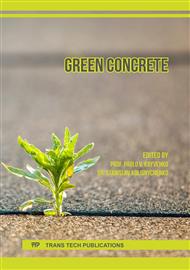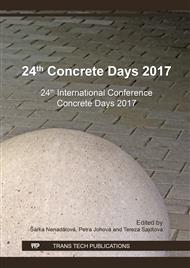p.250
p.256
p.262
p.273
p.280
p.284
p.290
p.299
p.305
Development of Geopolymer Mortar for Field Applications
Abstract:
In recent years there has been an increased demand for environmentally conscious and sustainable construction materials. One such material is “geopolymer” or “alkali-activated” binder. Current industry practice uses ordinary portland cement (OPC) in combination with supplementary cementitious materials as binder in concrete and mortar. Cement production is very energy intensive and accounts for approximately 10 percent of the total carbon dioxide emission in the world. In geopolymer materials, OPC is replaced with waste materials such as fly ash or slag cement along with a chemical activator. When supplied with additional chemical constituents, the aluminate and silicate present in fly ash or slag cement arrange into a polymeric structure with similar properties to hydrated cement. Proper application of this material can reduce, or even replace, the use of OPC in concretes and mortars. In addition to the cutback in OPC and the use of waste products, geopolymer materials require less water for curing and are shown to have increased resistance to chemical attack. While this product offers a “green” alternative to OPC, it is a new technological concept. Fly ash variability creates inconsistencies in quality control and chemical content. The chemical activators used to facilitate polymerization are often quite expensive and dangerous to use. Additionally, heat curing can be necessary for a geopolymer material to achieve specified compressive strength. Present limitations warrant extensive research and development to increase practicality of geopolymer materials for field implementation. In order to aid in the design and use of geopolymer materials, it is important that laboratory studies fully address the use of less than ideal materials and conditions in the creation of geopolymer. By using low cost materials and avoiding heat curing, laboratory research on geopolymer mortar can function as a means of developing a material that can be readily adopted into practice.
Info:
Periodical:
Pages:
280-283
Citation:
Online since:
February 2018
Authors:
Keywords:
Price:
Сopyright:
© 2018 Trans Tech Publications Ltd. All Rights Reserved
Share:
Citation:



